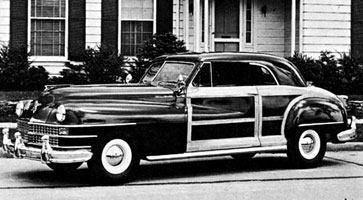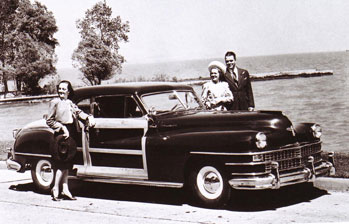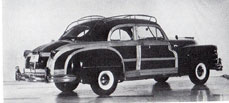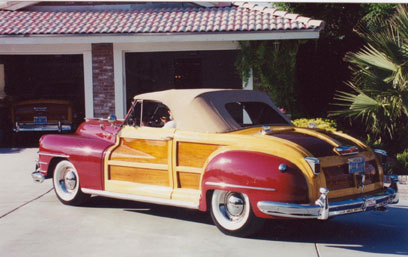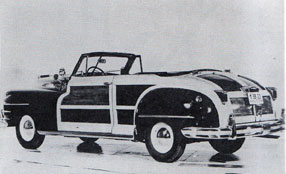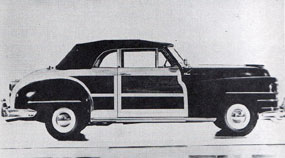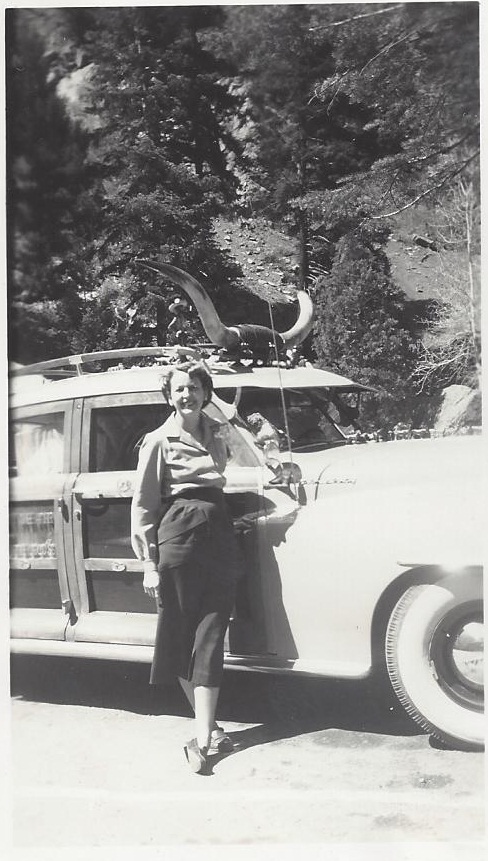Welcome to the Town and Country Chapter of the National Woodie Club
A Message From Your Founding/Retired President
Welcome to the Website of the Town and Country Chapter of the National Woodie Club. As I was gathering my thoughts about the first Website devoted to our interest in the wooden bodied Chrysler Town and Country, it occurred to me that, way back in the 1940s, the first owners of what are now vintage classics would have read this introduction about the “Town and Country Website” and wouldn’t have had a clue about what this website thing was all about. But here we all are in the age of electronic communication, and we are jumping in, in Star Trek terms, “to boldly go where no man (or woman) has gone before.”
> Join now!
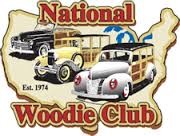
Join Now
Membership to the Town & Country Chapter of the National Woodie Club (NWC) requires that you are a member of the NWC.
You can become a member of the NWC at their website below:
Membership to the Chapter is $20.00 (Jan. through Dec.). This annual fee is used for direct operating expenses such as building and maintaining the Chapters website. It will also be used for expenses directly associated with preserving the history of the Town and Country. The Chapters officers do not receive any compensation for their time. Our T&C Chapter of the NWC has filed with the U.S. Internal Revenue Service (IRS) as a Not For Profit Organization (tax free).
Please provide the information below. You may pay via Paypal or mail a check payable to “Town & Country Chapter of the NWC”, and send to: Town & Country Chapter of the NWC, Care of Harold Mermel, P.O. BOX 159, Morganville, NJ 07751, USA
Annual Membership
$20
To Join T&C Chapter Through PayPal –
A Message From Your Founding/Retired President
By way of introduction, I am Robert C. Leher, your fearless president (retired), doing my best to lead us into the new age of cyberspace. Before I took up the cause of getting us all together for this journey, I was a lawyer (yes, a lawyer) for some twenty-seven years. My wonderful wife Carole and I have the privilege of enjoying our second T&C, a 1948 St. Clair blue convertible. It took me almost seven years to restore this car from nearly junk yard status. I used to tell people about my long term project, thinking that there was some sort of status in hanging in there for so long until the finish. But often the response from the person hearing my story was that “Well, my restoration took eight, nine, or ten years (or even more). Carole and I are now lucky enough to be living in Naples, Florida in the winter and Denver, Colorado in the summer. Our son, Cooper, is getting his Masters degree at the University of Oregon.
I would like to thank our two other officers, Harold Mermel (current President) and Terry Neeley (former Executive Vice President), who have been working ceaselessly for the last six months to get our Chapter off the ground. Harold’s input and constant work in encouraging new members has been invaluable. Terry has been the heart and soul of the interim website. Special thanks also go out to Bob Porter, whose encouragement and advice has helped to make this all happen. I also want to thank Jerry Witt, Mike Grajcar and the members of the Board of the National Woodie Club who have welcomed us aboard.
Here is the important thing. I repeat, here is the important thing. Our Chapter and the new Website will be as successful as the information that goes into them. Each of you is involved with the hobby in different ways. Take a moment and send us an email about what you are doing, and we will get it on the website and share it with our membership. Are you working on a project? Take some photos (including a picture of you) and send them to us. Let us know what your special project is about, and we will put it online. Are you going to a local, regional, or national show? Email us the pictures, and tell us about it (even if it is just a paragraph or two) and you can become a star on our website. We need technical information, history, and where to find parts. Looking to buy or sell a car? Let us know. We will circulate the info. I think you get the idea. We need everyone to participate actively in the Chapter.
I recognize we are in our infancy in a hobby of not so infant cars, and we need you to jump in and share whatever you are doing. This will make it happen.
Town and Country Chapter Officers

President – Harold Mermel
I started collecting old cars in 1965 with a 1942 Dodge sedan, which I still have. I collect mostly Mopars, but have others too. Currently, I have 18 old cars of which 10 are woodies (4 are T&C cars). I currently have a 1942 T&C barrelback (have owned 3 barrelbacks) and am knowledgeable about them. I have owned every T&C model from 1941 to 1950. I also own a 1949 Chrysler Royal woodie wagon and two Plymouth woodies. I have lots of T&C literature and photos.
Contact: 732-939-2868 (cell) | TEQS1000@aol.com

Executive Vice President – Jeff Larger
J.S. “Jeff” Larger was the T&C Gathering 2015 Committee Chair. A record five pre-war Chrysler T&C’s were in attendance along with another five post war T&C’s. In 1966 Jeff’s father Richard purchased his first collector car, a 1942 Chrysler T&C Windsor Sedan (wagon). The now known Escar “black-out” car was literally rescued from the riots burning of Cleveland’s old industrial areas. The car was our weekend home at many Cleveland area car shows during the late 1960’s. Our ’42 was stored from the late ’70s until 2004 when brothers Jeff and Gary Larger performed minor preservation work retaining much of the cars originality. It still has just 24k on the odometer and wears much of its factory built livery. During high school Jeff worked for Yenko Chevrolet, first, as a lot boy then body shop apprentice. After a stint @ OSU, Jeff’s fleet and lease career began with Chesrown Oldsmobile-GMC, just in time to participate in the great Cutlass sales records, which rocketed Oldsmobile Division to #3 and over 1-million in annual sales for many years in a row. Jeff and his Mentors took the dealership into the top ten in volume out of 3,300. Dealers nationally for Oldsmobile Division of General Motors. In 1993 Jeff co-founded Nationwide Fleet Services / Quality Auto Lease (NFSQAL), which became one of Central Ohio’s leading fleet and lease “independent” auto dealers. NFSQAL was the sales and leasing provider for AAA-Ohio as well as a number of large Federal Credit Unions. The early 2000s’ saw Jeff as co-owner of another used car and then Suzuki new car dealerships. 2004 Route 36 MotorCars was formed and continues to this today. Jeff and wife Karen reside in Powell, Ohio. They are parents of three grown children and two grandchildren.
Contact: 614-565-0070 | JLarger@Route36mc.com
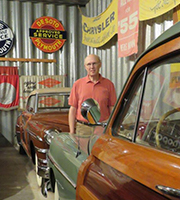
Vice President – Terry Hoeman
I’ve been into MoPar products for some time—since I got married to my wife, Andree, back in 1968. She is the daughter of a Chrysler-Plymouth dealership parts manager. I had an interest in old cars and with her support I picked up a ‘39 Plymouth touring sedan when we moved to Akron Ohio soon after our marriage. In fall of 1971 while living in Lancaster Ohio we had to take a detour through Newark Ohio and saw our first woodie, a ‘50 Chrysler Royal wagon, for sale on the front row of a used car dealer early in the morning. The next day we owned it. Shortly after restoring it in 1974 we moved back to Nebraska (I’m from Nebraska City—the home of Arbor Day so must have an inborn love for wood?). While in Ohio I heard about a NOS ‘49 T&C which remained for sale at a dealership in central Nebraska and started stopping to see it and other NOS MoPars in the showroom at least yearly when going to Colorado and after a few years started making offers on it. In 1983 we got together on a mutually agreeable unreasonable price and we ended up with our names on the previously unissued Manufacturers Certificate of Origin and took the car home. It’s been with us ever since—just occurred to me that it was a 34-year-old car then and effectively another 34 years have now passed!! Time flies! It is the woodie in the rear right corner of the photo which also shows our ‘50 wagon and one of our ‘50 hardtops. We now have a total of two ‘49 T&C converts, the ‘50 wagon and two ‘50 hardtops. We have previously let one ‘49 and one ‘50 go to new homes. Have around 20 collectible Mopars currently. I have been collecting MoPar memorabilia, parts, and literature for years-even loaned some to Don Narus when he did his original woodie book. I remember joining the TCOR in the early years and feeling that the ‘50 wagon didn’t belong but have always been proud that we joined the group. I look forward to working with others to help the T&C chapter. I was one of the founding members of our local NWC region and served as president for eight enjoyable years. I am also currently president of the local WPC club region.
Contact: 402-563-1442 | MOPARHO@GMAIL.COM
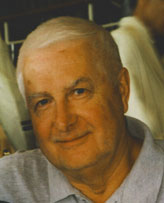
Historian – Don Narus
In 1947 as a Sophomore in High School, I was so impressed with our neighbors new Chrysler, that I vowed to one day own one just like it. During my High School Junior and Senior, I worked as a “Lot Boy” at a local Chrysler dealer.washed cars and got to drive them around the lot. I will never forget the 1948 T&C Convertible the day it arrived at the dealership. I washed it and drove it. I was so impressed that the image was etched in my mind. In 1970, married with two children, I purchased a 1948 Chrysler New Yorker Sedan with Highlander Plaid. It would become the first of many. In 1971, I acquired a 1948 T&C convertible (exactly like the one I drove as a “Lot Boy”). This led to two 1947 T&Cs, two more 1948 T&Cs and a 1949 T&C, which also led to my first book, “Chrysler’s Wonderful Woodie”, and the founding of “The Town and Country Owners Registry”, and many more books. Soooo as they say: “The rest is history”. That’s pretty much my story.
Contact: dlnarus@yahoo.com | www.newalbanybooks.com


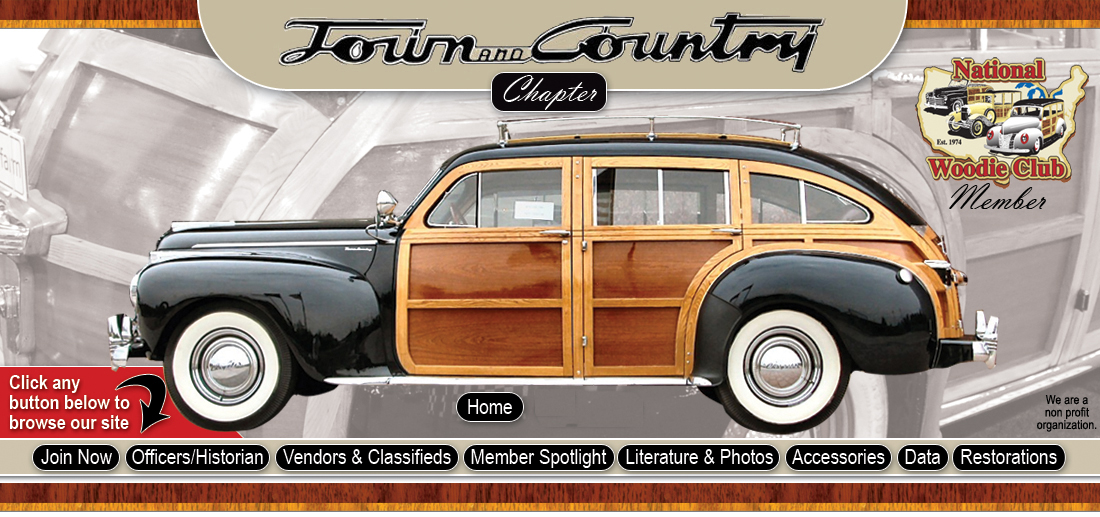
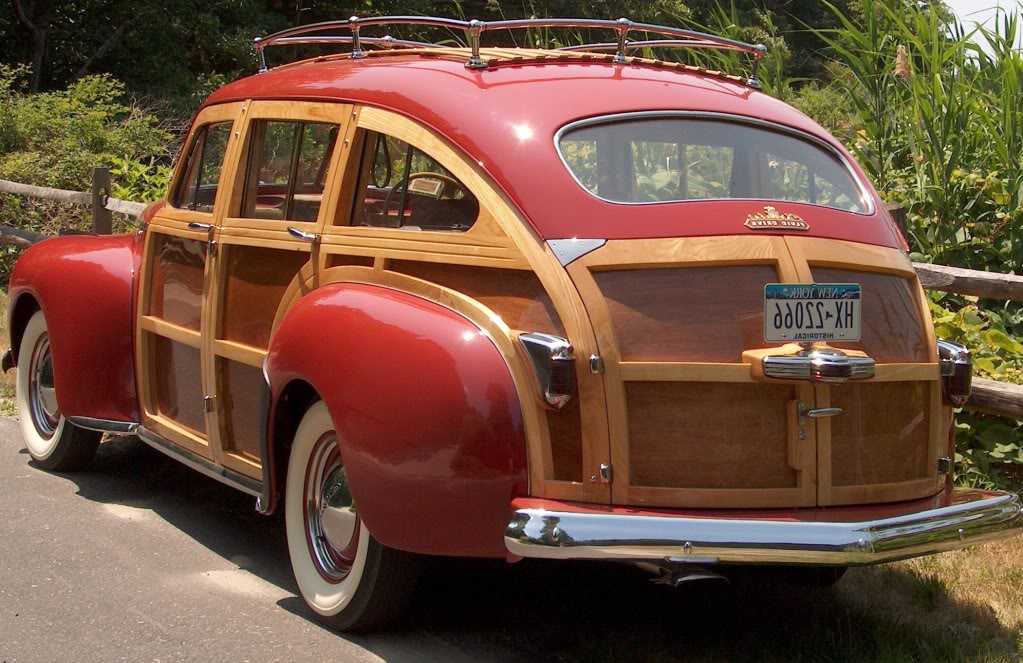
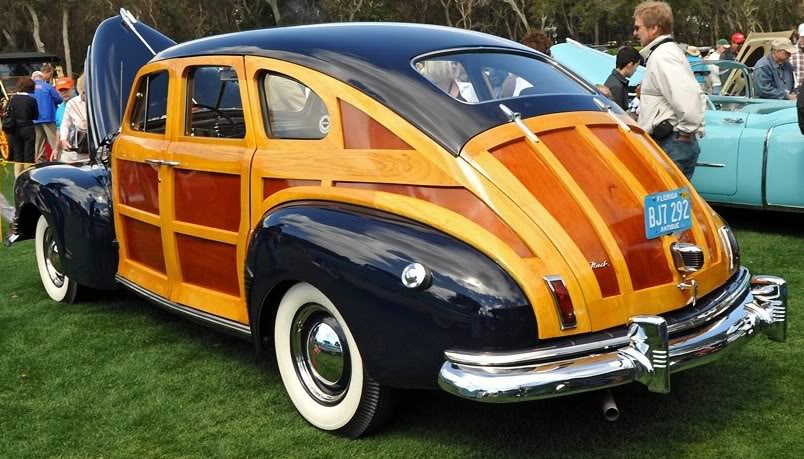
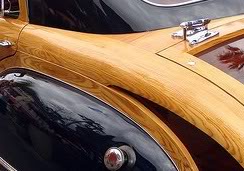
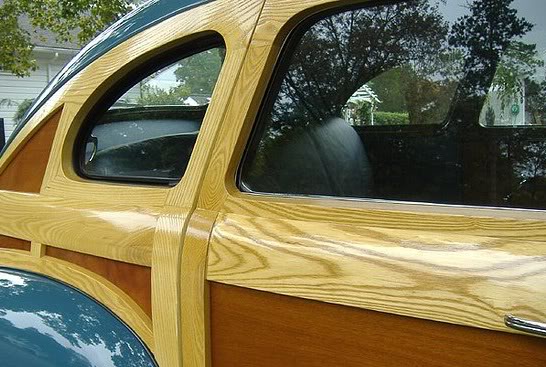
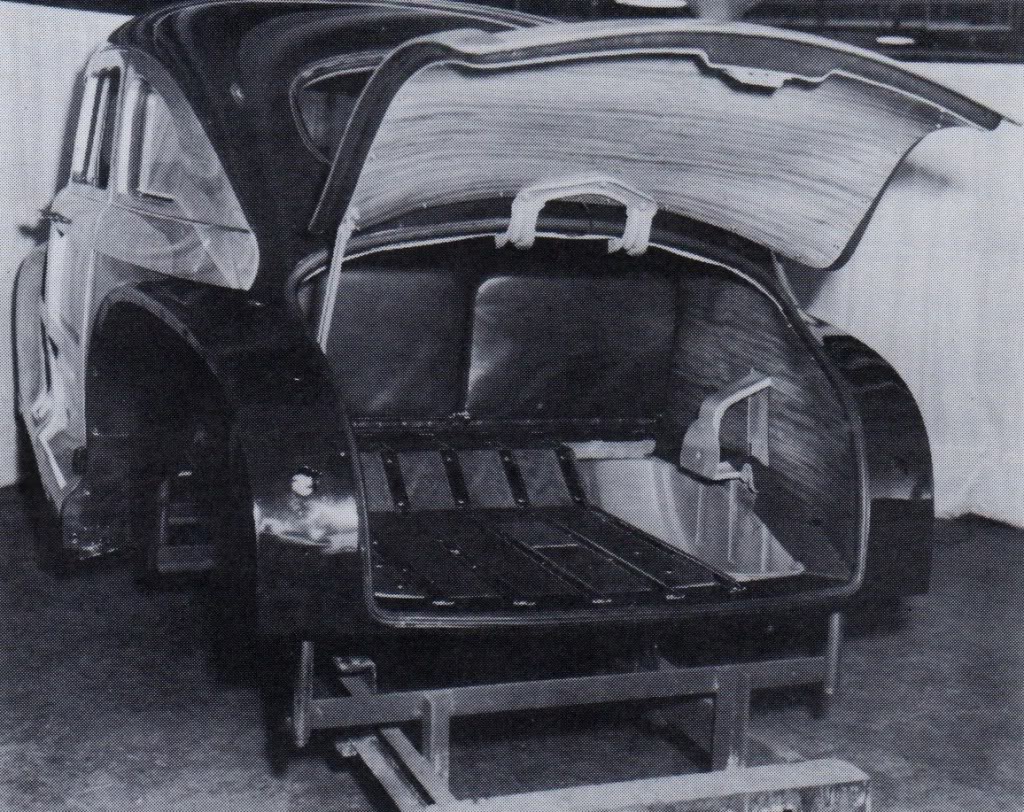
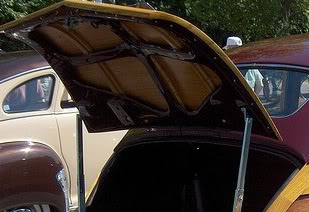
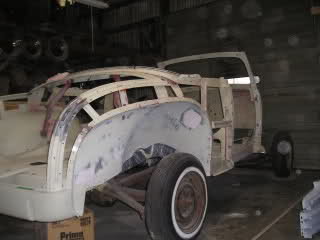
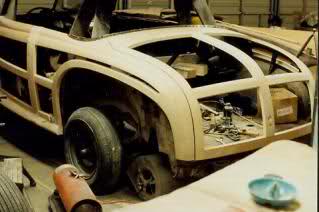
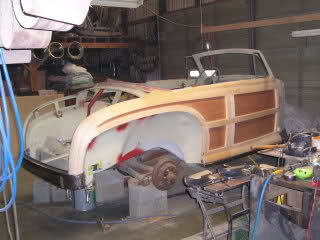


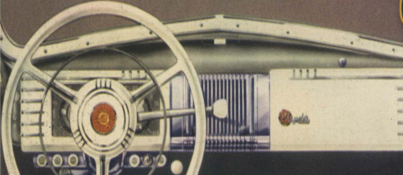 In 1940 Chrysler used dash plastic conservatively but continued the “Art Deco” look.
In 1940 Chrysler used dash plastic conservatively but continued the “Art Deco” look.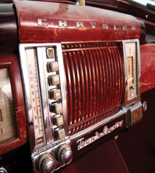
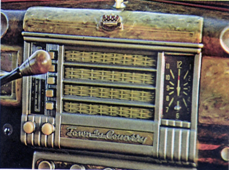
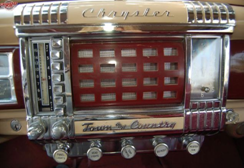 Chrysler offered a choice of ten colors in 1941 and introduced Mottled (Marbleized) plastic for a more luxurious look. Right, one set of plastic trim pieces for 1941 Sedan.
Chrysler offered a choice of ten colors in 1941 and introduced Mottled (Marbleized) plastic for a more luxurious look. Right, one set of plastic trim pieces for 1941 Sedan.